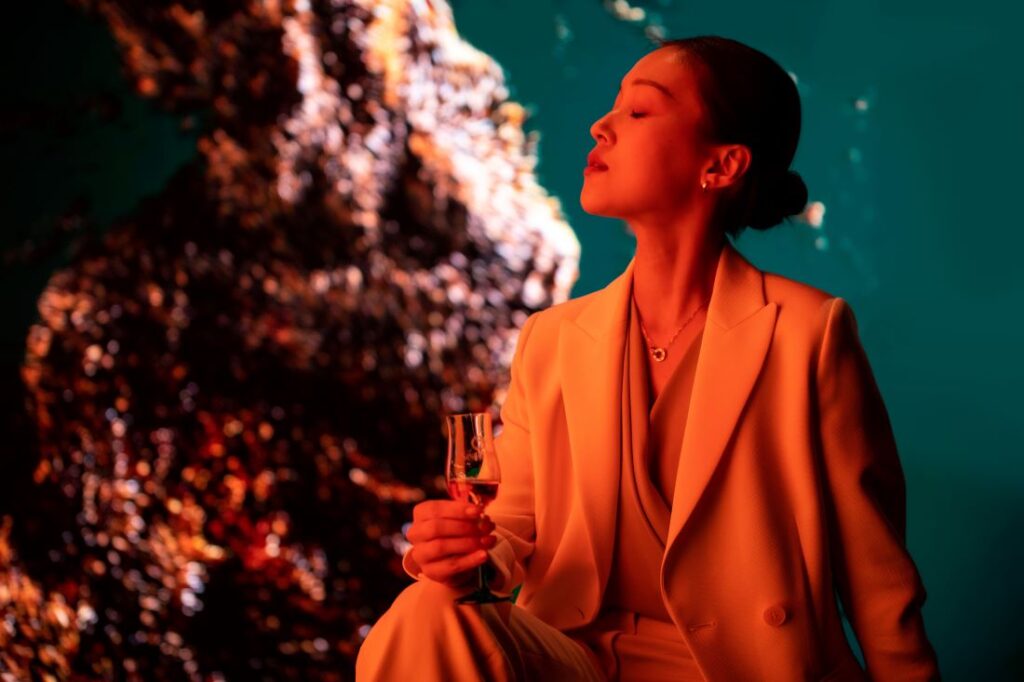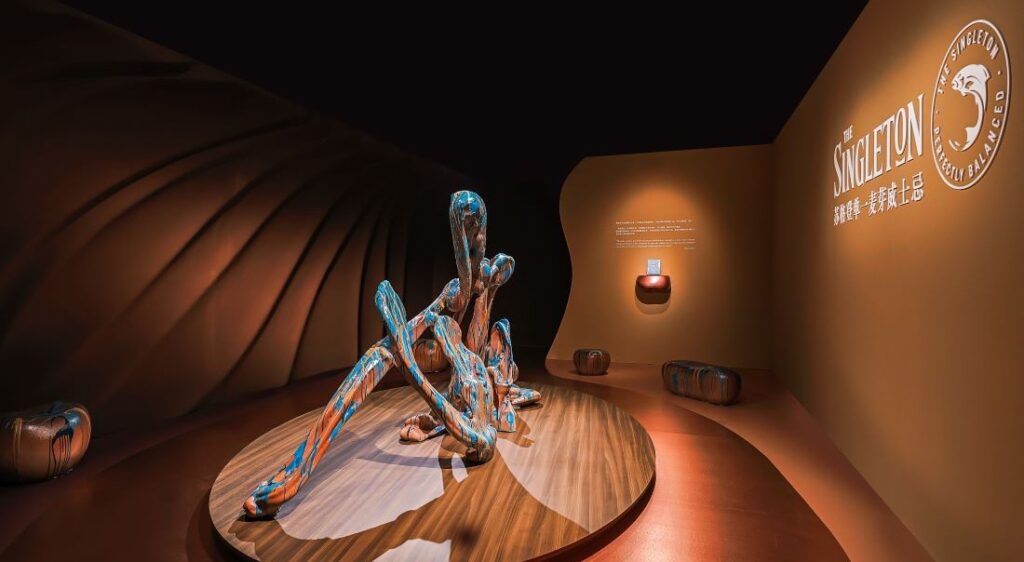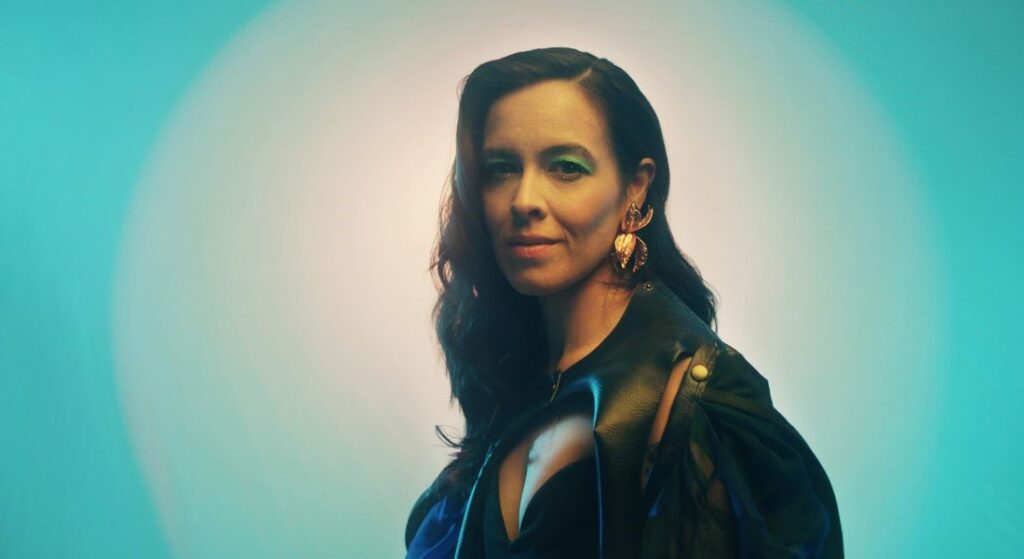This website uses cookies so that we can provide you with the best user experience possible. Cookie information is stored in your browser and performs functions such as recognising you when you return to our website and helping our team to understand which sections of the website you find most interesting and useful.
The Singleton 40-Year-Old: Katherine Templar Lewis on the science of great taste
By Michelle Johnson | 3 August 2023 | Food & Drink, Lifestyle
As The Singleton releases its most decadent expression yet, neuroscientist Katherine Templar Lewis reveals all about the sensory science behind the scotch – welcome to sensorial maximalism

Whisky has long been known as the water of life, but with The Singleton’s release of the 40-Year-Old Single Malt Scotch Whisky – the third and final of a series of exceptional releases – the Glen Ord distillery has taken the restorative roots of auld uisge beatha to the next level with the creation of a new science-led sensory tasting experience.
Partnering with neuroscientist Katherine Templar Lewis, The Singleton explored a new theory based in neuroaesthetics – sensorial maximalism – which enhances and focuses each of the senses in order to achieve superlative taste for this decadent blend, created by malt master Maureen Robinson.
“Sensorial maximalism has been really exciting,” says Katherine. “The starting point was this incredible whisky, The Singleton 40-Year-Old, which has an incredibly rich, deep flavour profile.” Katherine’s work was used in the development of an immersive sensory gallery experience in Shanghai, called The Rooms of Maximalism, for the launch of the expression in April, but has also created a tasting ritual that can be explored at home to maximise the senses through external experiences – such as curating touch, sound, and sight.

“What surprised me about The Singleton 40-Year-Old was the huge journey you go on when you taste it, as all these different flavours unfold. It was really exciting to translate that physically,” she says. “We wanted to create experiences that amplify the flavour profile, not just in terms of the flavour itself, but the emotional experience as well. Taste and smell are intrinsically linked, and really powerful emotional tools in terms of memory formation and wellbeing. These senses bypass part of the brain that slows sensory processing, so you get an instant reaction to these senses as it hits the brain’s limbic system, which is the seat of our emotions. None of our other senses are quite as powerful in eliciting emotion and memory.”
The Rooms of Maximalism saw guests journey through rooms that delivered precise sensory stimulation before enjoying the first global tasting of the 40-Year-Old. Some of the sensory stimulants included the unveiling of a large-scale physical artwork by Zhou Yilun, areas of sensory deprivation, an ASMR soundscape designed by conceptual artist Moodsonic, and flowing digital art by Found Studio designed to induce a flow state in viewers – all this alongside a range of tactile and textural prompts throughout the exhibition.
“What I love about neuroaesthetics is you can start to shape experiences that are going to have this positive impact on people. Shanghai is the perfect example of that, working with these talented artists who actually explore the world in a similar way to scientists,” says Katherine. “I think artists and scientists are more similar than we think: we just use different tools to achieve understanding.” »
The flavour profile of The Singleton 40-Year-Old, the finale in the distillery’s Epicurean Odyssey series, is mellow on the nose with fruity top notes of dried apple, plum and spicy oak beneath. With a light to medium body, it is smooth and lightly waxy on the palate. The taste starts sweet, vibrant and very fruit, with sour plums and salt following mid-palate. The complexity of the flavour emerges with impressions of chocolate-covered pears and caramelised tropical fruits, with slow-building pepper, spice and a hint of smoke, before a long, deep-flavoured finish.
Maureen describes the scotch as “one which I’ve thoroughly enjoyed crafting and have drawn on my own personal journey of flavour from my career as a whisky maker”.
“At the end of this very extensive secondary maturation we sought out specially selected Ron Zacapa XO casks for a final indulgent finish to the whisky, which deliver an intensely rich, fruity and smooth finish to bring deep notes of dark chocolate. The result: a whisky that epitomises my desire to seek out new flavour through craft, and a whisky at its most maximal,” she says.
ONE WITH THE SENSES

Katherine’s interest in sensory exploration began early in her career. The ‘renegade scientist’ started in psychology before moving into neuroscience and the emerging field of neuroaesthetics. “Neuroaesthetics is basically looking at how we are impacted by the multi-sensory world around us,” she explains. “How does light, sound, taste and smell impact our brain and body?”
The field began with research into sound but has expanded into other senses. In addition to scientific research, Katherine also works with major brands including Google, Nike, EdenLabs and Goldsmiths to curate user experiences. “Experience building is the core of what we do because so much of the science gets stuck in the labs and then it doesn’t really help people,” she says. “What’s amazing with taste, especially, is that it’s a sense that we can be really playful with now that we understand how it starts to work in the brain.”
So, how can we create such an experience at home? Perhaps surprisingly, it’s far easier than one might believe.
“We know that there are certain things we can do to enhance and change how we experience flavour,” Katherine says, citing Gastrophysics author Charles Spence. “Our expectations enhance flavour – eating from a red plate makes food taste sweeter, while a blue plate makes food seem saltier. Similarly, we can enhance our tasting experience by using other sensory cues. We can prime our tastebuds with textiles, sounds and artwork to genuinely enhance the flavour in the mouth and allow us to absorb and consciously register more of it.“
The main thing is to really ground ourselves in the body, because we spend so much time in the modern world disconnected from our body – bombarded with messages and notifications from the outside world,” she says. “The first step to any sensory tasting is to close your eyes and really focus on your different senses, take deep breaths in and out, slowing your breathing and resetting your system. Then we start with steps to bring out these flavours, starting with touch.”
Katherine recommends selecting the heaviest smooth glass or drinking vessel possible to enhance the element of luxury. “Interestingly, the heavier and smoother the glass, the more value we naturally attribute to it – it literally gives weight to the occasion,” she says.
Colour also influences the brain, with warmer colours like red and orange bringing out sweeter notes of vanilla and fruit, as well as playing into our cultural associations with bright colours being happier. Finally, listening to ASMR or your favourite music acts as a sensory reward, encouraging the brain’s production of the “feel-good” hormone dopamine.
If this sounds similar to mindfulness or meditative practises, you wouldn’t be wrong. “It’s really interesting to pick up on that, because one of the key goals of meditation is to get our brain rooted in the present and in our bodies. There’s a lot of research now that indicates we feel emotion in our bodies, not in our brain – the quickening of our heart, excitement in our stomach – and the more we disconnect from our body, the less we connect to our sense of self. The brain gets stuck in two states: the pain of the past and the fear of the future,” says Katherine.
“But, equally, when you’re in that state of worry, you’re not as connected to your senses. There are some really interesting parallels between meditation and our tasting rituals that bring us back to our senses. Rituals create meaning and enhance our wellbeing.”
It will be no surprise to whisky connoisseurs that the occasional dram is good for the soul, and Katherine’s mindful, maximalist ritual is a delightfully calming complement to the expression, further enhanced by a series of visual artworks and soundscapes available online via The Singleton’s website.
“The Singleton 40-Year-Old is a perfect centrepiece in that way, because its creation is a science as well as an art and, hopefully, with the at-home ritual, those elements will now be even more enhanced.”







